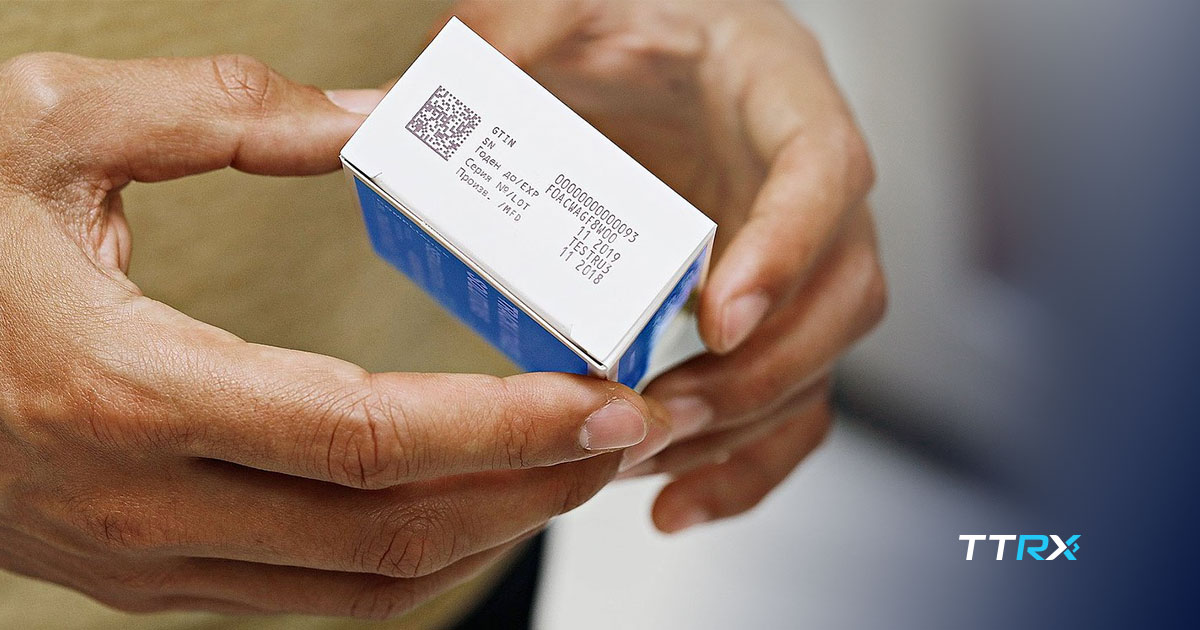As counterfeit medicines become increasingly common around the world, the GS1 EPCIS standard ensures the integrity of the healthcare supply chain as well as consumer safety.
Illegitimate drugs can enter your distribution chain at any time, but counterfeiters can seldom provide a convincing flow of information about the origin of these products. This flow of information is the basis for legislation such as the DSCSA, which prevents counterfeit medicines from reaching the consumer.
Today, pharmaceutical supply chain stakeholders require both the availability and accessibility of information related to drug transactions and movements.
Thus, the life cycle of a product can be mapped in line with current regulations.
As regulatory deadlines loom, understand how EPCIS enables healthcare trading partners to meet regulatory requirements for drug Chains of Custody and Ownership, using supply chain visibility to improve efficiency and safety in their processes.
Discover 4 healthcare supply chain bottlenecks that need a solution
Companies participating in pharmaceutical supply chains around the world are struggling to:
- improve their agility and responsiveness to changes in demand and potential supply disruptions;
- Provide visibility into any given product’s information at any stage of the chain;
- Increase consumer confidence through information transparency;
- Reduce the cost of integration with trading partners.
GS1 EPCIS: Event-based traceability is the only solution.
Electronic Product Code Information Services, or just EPCIS, is a language that allows supply chain agents to capture and share information about the flow of any product, from its production to consumption.
EPCIS understands the movement of a product as an event, answering the following questions:
- What: which product participates in this event?
- When: at what time did the event take place?
- Where: where did the product come from? Where is it now?
- Why: the event is part of what process? Why did it happen?
EPCIS is used to share the trajectory of a given product, tracked through serial or batch numbers.
Thus, different companies can have a shared view of the visible events of an item within the supply chain.
EPCIS must be accompanied by the GS1 Core Business Vocabulary (CBV), a standardized vocabulary that ensures that interested companies speak the same language when sharing event data.
DSCSA 2023 and EPCIS: electronic data exchange that is secure and interoperable.
Among the key requirements of the Drug Supply Chain Security Act (DSCSA) in the United States is complete unit traceability via product identifiers.
Any authorized trading partner must exchange Transaction Information and Transaction Statements for products in an electronic, interoperable, and secure manner.
The law requires that this electronic data exchange must conform to an internationally recognized standard.
And EPCIS is the only standard that meets these requirements!
Align your traceability solutions to GS1 EPCIS and discover the benefits of using an open global standard.
EPCIS, which supports data captured by barcode scanning, has useful benefits for supply chains in any industry:
Overhead costs
According to GS1 Global, alignment to EPCIS reduces the post-implementation costs of traceability systems.
The EPCIS standard improves the efficiency of diverse organizational processes, such as inventory management, loss prevention, and the race for increased consumer safety (with positive impacts on brand reputation), for example, and is increasingly used in the food and healthcare industries.
Streamlined processes
EPCIS aids businesses that participate in the supply chain by facilitating complex processes such as:
- Repackaging;
- Returns and tracking;
- Recalls and withdrawals.
Protection and ownership
During the capture and sharing of event data, the EPCIS standard assists in identifying the agent in possession, custody or ownership of an item, as well as determining the agent who owned the item prior to its movement.
Why should I prepare for GS1 EPCIS now?
Using standard languages like EPCIS supports product serialization and traceability and ensures the safety of the healthcare supply chain all while complying with emerging regulations around the world – with their compliance implementation deadlines looming ever closer!
Preparing now for EPCIS enables the entire healthcare community to comply with regulatory requirements, decreasing instances of adulteration, counterfeiting, or detour of drugs and other pharmaceutical products.
Still haven’t found a traceability vendor that’s right for your business? TrackTraceRX’s serialization and traceability solutions are compatible with EPCIS and EDI event sharing, and ensure you save on those implementation costs!
Contact our team of experts and find out what next steps your company should take toward regulatory compliance!




